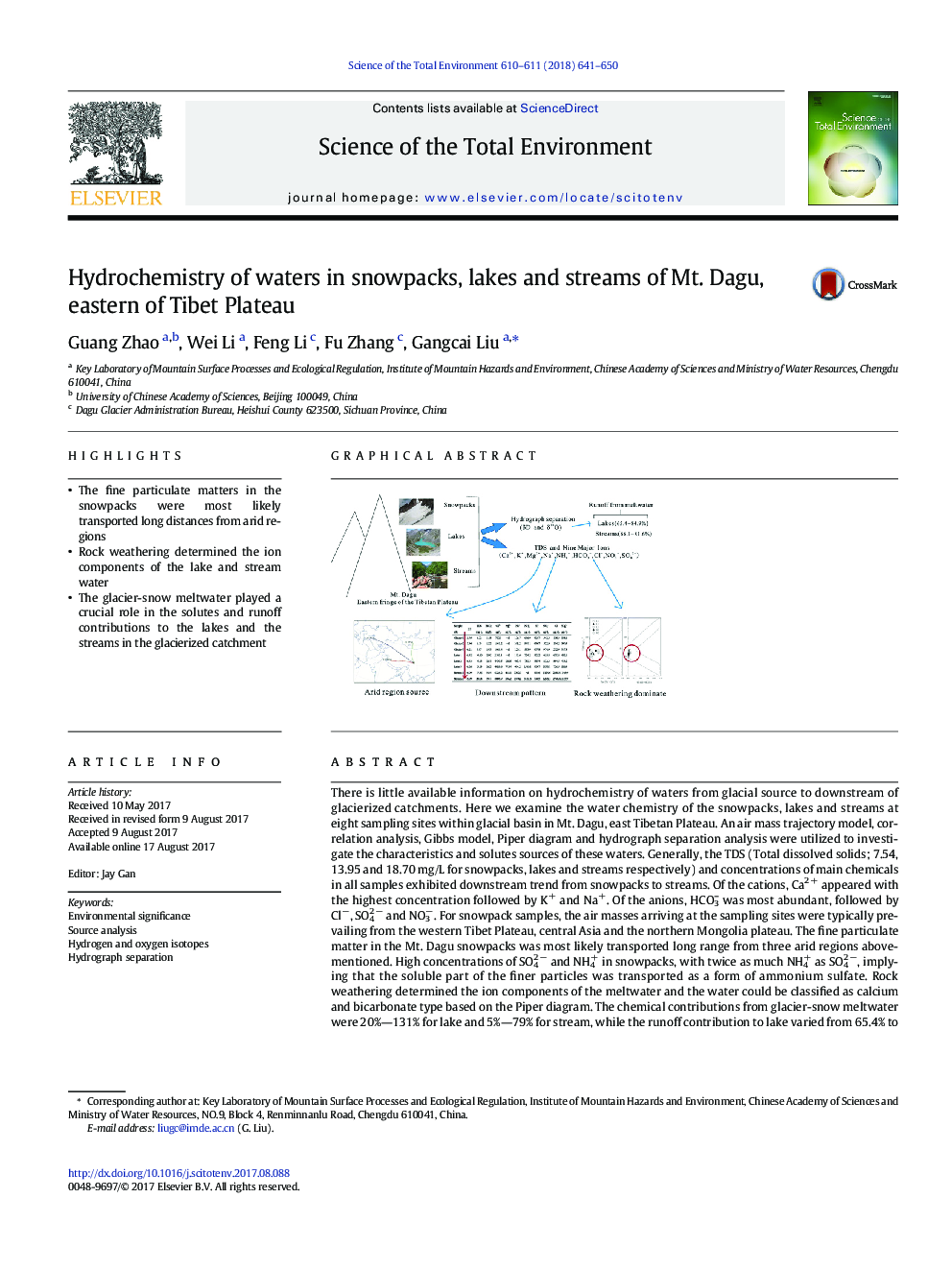| کد مقاله | کد نشریه | سال انتشار | مقاله انگلیسی | نسخه تمام متن |
|---|---|---|---|---|
| 5750230 | 1619692 | 2018 | 10 صفحه PDF | دانلود رایگان |

- The fine particulate matters in the snowpacks were most likely transported long distances from arid regions
- Rock weathering determined the ion components of the lake and stream water
- The glacier-snow meltwater played a crucial role in the solutes and runoff contributions to the lakes and the streams in the glacierized catchment
There is little available information on hydrochemistry of waters from glacial source to downstream of glacierized catchments. Here we examine the water chemistry of the snowpacks, lakes and streams at eight sampling sites within glacial basin in Mt. Dagu, east Tibetan Plateau. An air mass trajectory model, correlation analysis, Gibbs model, Piper diagram and hydrograph separation analysis were utilized to investigate the characteristics and solutes sources of these waters. Generally, the TDS (Total dissolved solids; 7.54, 13.95 and 18.70Â mg/L for snowpacks, lakes and streams respectively) and concentrations of main chemicals in all samples exhibited downstream trend from snowpacks to streams. Of the cations, Ca2Â + appeared with the highest concentration followed by K+ and Na+. Of the anions, HCO3- was most abundant, followed by Clâ, SO42Â â and NO3â. For snowpack samples, the air masses arriving at the sampling sites were typically prevailing from the western Tibet Plateau, central Asia and the northern Mongolia plateau. The fine particulate matter in the Mt. Dagu snowpacks was most likely transported long range from three arid regions above-mentioned. High concentrations of SO42Â â and NH4+ in snowpacks, with twice as much NH4+ as SO42Â â, implying that the soluble part of the finer particles was transported as a form of ammonium sulfate. Rock weathering determined the ion components of the meltwater and the water could be classified as calcium and bicarbonate type based on the Piper diagram. The chemical contributions from glacier-snow meltwater were 20%â131% for lake and 5%â79% for stream, while the runoff contribution to lake varied from 65.4% to 84.9%, and 66.1% to 81.6% for stream. This study suggested that glacier-snow meltwater was the mainly runoff contributor to lake and stream water and that snowpack solutes derived from eolian additions exert a significant influence on lake and stream chemistry.
257
Journal: Science of The Total Environment - Volumes 610â611, 1 January 2018, Pages 641-650